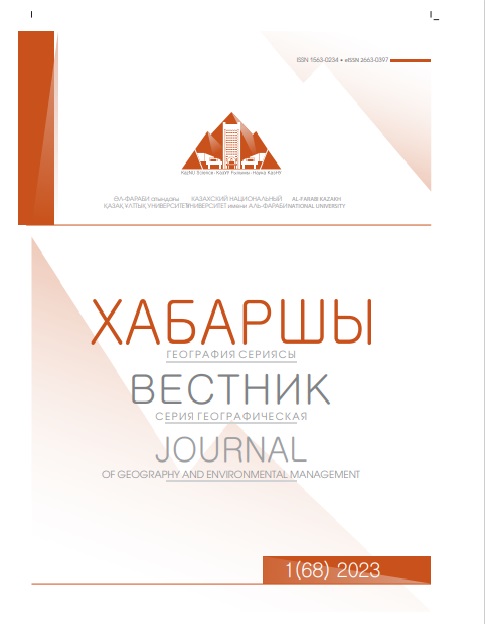Ecological assessment of the soil cover exposed to phosphogypsum dumps
DOI:
https://doi.org/10.26577/JGEM.2023.v68.i1.08Keywords:
phosphogyps, successions, granularted slag, recovery.Abstract
Nowadays, the basis of the production of phosphorous and phosphorous fertilizers in the Republic of Kazakhstan is concentrated at the mineral fertilizers plant of "Kazphosphate" LLP in Zhambyl region.
One of the current problems is the study of the negative impact on the ecosystem as a result of the storage of phosphogypsum in the landfills of the mineral fertilizers plant formed during the decomposition of phosphate raw materials, and the study of the self-healing process of an object exposed to anthropogenic impact.
The research purpose - ecological assessment of the soil cover exposed in phosphogypsum dumps and the assessment of reclamation potential of this object.
The data obtained as a result of the study can be used in the future to monitor objects where fofogypsa residues have accumulated, and for restoration work of damaged soil coverings.
During the research were used chemical, geobotanical and landscape-ecological methods.
Analysis of the total phosphorus content in soil samples in the study area showed that its toxicity in all objects is not dangerous. It can be seen that the mobile content of zinc and copper in all the obtained soil samples did not exceed the maximum permissible concentration, and the concentration of cadmium in all the obtained points exceeded the maximum permissible concentration and in all other directions except the east increased as it moved away from the center. The self-healing potential of the soil and vegetation cover, conditionally obtained by us, impact-buffer-background zones, respectively, very low-low-satisfactory.



